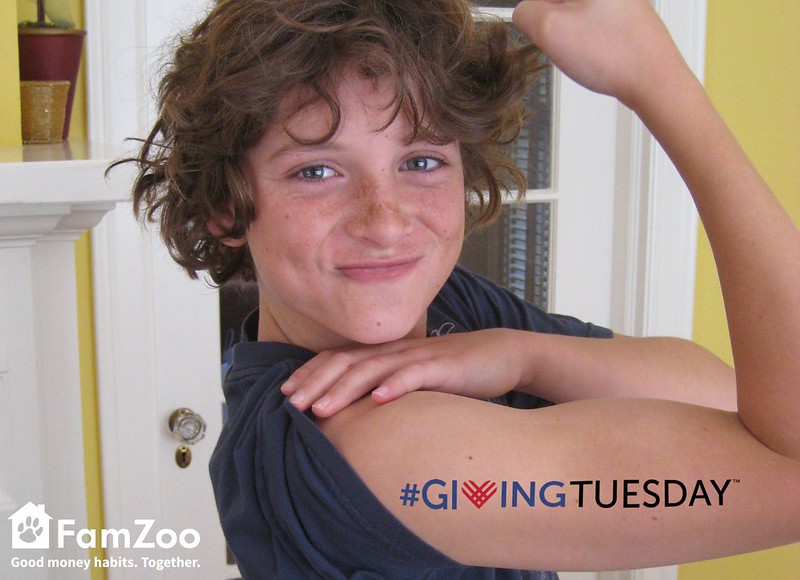I have a shortlist of healthy habits I’d like to instill in my kids, and charitable giving is definitely on it. It’s right up there with a solid work ethic and regular exercise. In fact, charitable giving has a lot in common with exercise:
- Nobody else can do it for you.
- It can be tough to get started.
- You always feel good about it afterwards.
You might even argue that charitable giving is better than exercise because it makes other people feel good too.
So how can you motivate your child to get started with charitable giving and, ideally, turn it into a life-long habit? Here are six approaches that have worked well with our kids so far.
- Get skin in the game. Remember, you can’t have somebody else do the giving for you. Your kids won’t achieve a sense of philanthropic well-being (a.k.a. the charitable buzz) if you are the one giving the money and the time on their behalf. I learned this lesson early on with my oldest son. Originally, I carved out a fairly large portion of our charitable budget for our kids to help us donate. After a few lackluster iterations, I asked my son what he thought of the practice. His response: “Dad, giving away your money just isn’t that interesting.” It’s not the size of the donation that matters, it’s the sense of ownership and personal responsibility. No matter how modest the amount, have your child carve out a portion of their own income to donate — be it from a regular allowance, chores, or outside jobs. Combine that modest amount with a healthy dose of volunteer hours. This will create real meaning and build self-motivation.
- It’s not about you. Kids crave independence — especially teens. They’ve got their own interests. Sometimes the less they overlap with ours, the better as far as they’re concerned. So, let your kids pick their own charitable initiatives — something they truly care about, something related to their special talents. I don’t have a musical bone in my body, but my two older sons are both musicians. Perfect. They chose to donate their time to a local organization dedicated to bringing songwriting, music technology, and production skills to inner city kids. It proved to be a truly memorable and rewarding experience. If you want to stimulate those charitable impulses, align initiatives with your kids’ passions, not your own.
- Rinse and repeat. Repetition is key to turning an activity into a habit. One way we’ve created a regular charitable touch-point is to choose a relatively small donation target — $50 in our case. When the charitable extractions from their weekly incomes builds up and hits that limit, the kids make a donation. Fortunately, the Internet has created limitless opportunities to make these micro-donations. One of our particular favorites is DonorsChoose.org — an online charity connecting donors across the Internet to classrooms in need across the country. Your child can choose among thousands of teacher-proposed projects to find one that matches a specific topic or location of interest. Read more in my post, “DonorsChoose.com: A Neat, Convenient Way to Introduce Kids to Philanthropy.”
- Make it a holiday tradition. Another way to maintain a regular charitable pulse is to build a
giving tradition around a holiday. We chose Thanksgiving. It’s the one special time of year
we have grandparents, parents, siblings, and cousins all together. Each year, the extended
family sits down to make hand-made cards for US military personnel deployed overseas. You can see examples of our cards here and here. It’s a
wonderful group exercise that still allows for plenty of personal expression. Holiday traditions are a wonderful
mechanism for transforming activities into habits.
If you’re struggling to pick just the right holiday to anchor your charitable tradition, consider the first Tuesday following two of the most self-indulgent, consumption focused days of the year: Black Friday and Cyber Monday. Why? It’s #GivingTuesday, a “global day of giving fueled by the power of social media and collaboration.” Check out my suggestions for participating with your kids in my post, “Counterbalance Consumerism on #GivingTuesday.”
- Soak up summer downtime. Summer is a great time to schedule in some volunteer work. Try aligning the activity with one of your kid’s passions. Is your child an athlete? Our youngest teen enjoys tennis. By volunteering at a Tennis and Tutoring program at the local university, he was able to serve underprivileged kids while enjoying one of his favorite activities. There are even summer camps that focus on community service. In the two previous summers, he participated in a two week youth community service and leadership camp. Skeptical going in, our son emerged transformed: giving time to others was now firmly on his radar.
- If at first you don’t succeed... Kids are all different — even within the same family. Don’t be discouraged if your child doesn’t embrace charitable endeavors right away. It’s like finding just the right exercise routine. Keep trying different activities until something clicks. Ultimately, everyone — your child, you, even the community — will be glad you stuck with it.
Do you have a favorite tip for developing your kid’s charitable giving muscle? Share it with us in the comments below, post it on our Facebook page, or tweet it to @FamZoo on twitter.


 Newer Post
Newer Post

Post a Comment